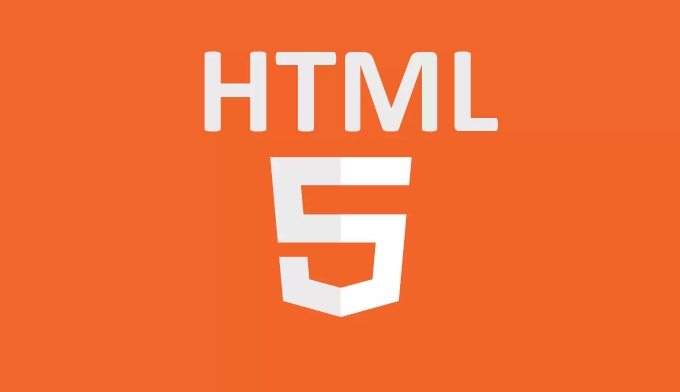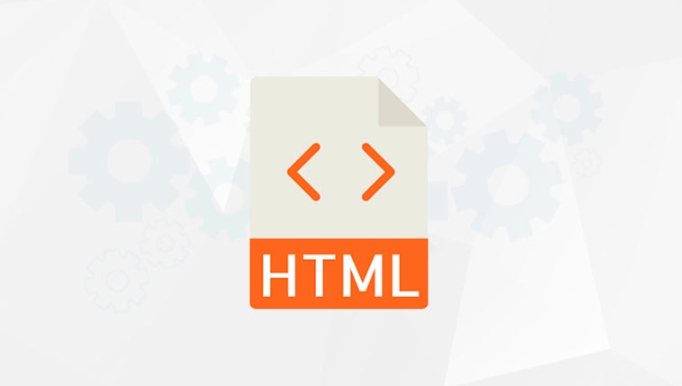What is the rel='nofollow' attribute and when to use it in HTML
Aug 03, 2025 am 01:24 AMUse rel="nofollow" (or rel="sponsored"/rel="ugc") when linking to untrusted, paid, or user-generated content to avoid passing SEO value; 1. Apply rel="nofollow" to user-generated links in comments or forums to prevent spam; 2. Use rel="sponsored" or rel="nofollow" for paid or sponsored links to comply with search engine guidelines; 3. Use rel="nofollow" for external links to untrusted sites to protect your site’s reputation; 4. Rarely, use nofollow internally to block crawling of non-public pages, though robots.txt or meta tags are preferred; modern alternatives include combining rel="nofollow sponsored" for clearer context, and search engines treat these as hints rather than strict rules, helping maintain your site’s link integrity by ensuring only trusted, editorially approved links contribute to SEO rankings.

The rel="nofollow" attribute in HTML is a link relationship value that tells search engines not to follow a hyperlink or pass any SEO (search engine optimization) value from the source page to the destination page.

In simpler terms, when you add rel="nofollow" to a <a></a> tag, you're telling search engines like Google:
"This link exists, but don’t use it to influence the ranking of the linked page in search results."
When to Use rel="nofollow"
You should use rel="nofollow" in specific situations where you don’t want to endorse the linked page or when the link is not editorially controlled. Here are the most common use cases:

1. User-Generated Content (UGC)
Links posted by users in comments, forums, or reviews should typically be marked as nofollow. This helps prevent spam and discourages people from abusing your site to boost their own SEO.
Example:

<a href="https://example.com" rel="nofollow">Check out my site!</a>
This is common on blog comment sections. Without
nofollow, spammers would flood comments with links to manipulate search rankings.
2. Paid or Sponsored Links
If you’re being paid to include a link (e.g., in a sponsored post), you must use rel="nofollow" or the newer rel="sponsored" to comply with search engine guidelines (like Google’s).
Example:
<a href="https://sponsoredbusiness.com" rel="sponsored">Visit our sponsor</a>
Google recommends using
rel="sponsored"specifically for paid links, butrel="nofollow"is still acceptable.
3. Untrusted or External Links
If you're linking to a site you don’t trust or can't vouch for, using nofollow protects your site from being associated with low-quality or potentially harmful content.
Example:
<a href="https://unknown-site.com" rel="nofollow">External resource</a>
This is useful when linking to third-party sources in community-driven content.
4. Internal Use Cases (Rare)
Sometimes you might use nofollow internally — for example, to prevent search engines from crawling login pages, admin areas, or duplicate content. But this is less common and often better handled via robots.txt or meta tags.
Other Link Relationship Values (Modern Alternatives)
Google supports more granular attributes now:
rel="sponsored"– for paid or sponsored linksrel="ugc"– for user-generated content like commentsrel="nofollow"– general use when you don’t want to pass ranking credit
You can even combine them:
<a href="https://example.com" rel="nofollow sponsored">Ad link</a>
Google treats nofollow, sponsored, and ugc as hints, not strict directives, meaning they usually won’t follow or credit the link, but they might in some cases.
Bottom Line
Use rel="nofollow" (or sponsored/ugc) when:
- The link is not a natural editorial endorsement
- It’s paid, user-submitted, or untrusted
- You want to avoid potential SEO penalties or manipulation
It’s a simple but powerful tool to maintain the integrity of your site’s link profile.
Basically: if you didn’t personally trust or earn that link, mark it appropriately.
The above is the detailed content of What is the rel='nofollow' attribute and when to use it in HTML. For more information, please follow other related articles on the PHP Chinese website!

Hot AI Tools

Undress AI Tool
Undress images for free

Undresser.AI Undress
AI-powered app for creating realistic nude photos

AI Clothes Remover
Online AI tool for removing clothes from photos.

Clothoff.io
AI clothes remover

Video Face Swap
Swap faces in any video effortlessly with our completely free AI face swap tool!

Hot Article

Hot Tools

Notepad++7.3.1
Easy-to-use and free code editor

SublimeText3 Chinese version
Chinese version, very easy to use

Zend Studio 13.0.1
Powerful PHP integrated development environment

Dreamweaver CS6
Visual web development tools

SublimeText3 Mac version
God-level code editing software (SublimeText3)

Hot Topics
 Applying Semantic Structure with article, section, and aside in HTML
Jul 05, 2025 am 02:03 AM
Applying Semantic Structure with article, section, and aside in HTML
Jul 05, 2025 am 02:03 AM
The rational use of semantic tags in HTML can improve page structure clarity, accessibility and SEO effects. 1. Used for independent content blocks, such as blog posts or comments, it must be self-contained; 2. Used for classification related content, usually including titles, and is suitable for different modules of the page; 3. Used for auxiliary information related to the main content but not core, such as sidebar recommendations or author profiles. In actual development, labels should be combined and other, avoid excessive nesting, keep the structure simple, and verify the rationality of the structure through developer tools.
 How to group options within a select dropdown using html?
Jul 04, 2025 am 03:16 AM
How to group options within a select dropdown using html?
Jul 04, 2025 am 03:16 AM
Use tags in HTML to group options in the drop-down menu. The specific method is to wrap a group of elements and define the group name through the label attribute, such as: 1. Contains options such as apples, bananas, oranges, etc.; 2. Contains options such as carrots, broccoli, etc.; 3. Each is an independent group, and the options within the group are automatically indented. Notes include: ① No nesting is supported; ② The entire group can be disabled through the disabled attribute; ③ The style is restricted and needs to be beautified in combination with CSS or third-party libraries; plug-ins such as Select2 can be used to enhance functions.
 Implementing Clickable Buttons Using the HTML button Element
Jul 07, 2025 am 02:31 AM
Implementing Clickable Buttons Using the HTML button Element
Jul 07, 2025 am 02:31 AM
To use HTML button elements to achieve clickable buttons, you must first master its basic usage and common precautions. 1. Create buttons with tags and define behaviors through type attributes (such as button, submit, reset), which is submitted by default; 2. Add interactive functions through JavaScript, which can be written inline or bind event listeners through ID to improve maintenance; 3. Use CSS to customize styles, including background color, border, rounded corners and hover/active status effects to enhance user experience; 4. Pay attention to common problems: make sure that the disabled attribute is not enabled, JS events are correctly bound, layout occlusion, and use the help of developer tools to troubleshoot exceptions. Master this
 Configuring Document Metadata Within the HTML head Element
Jul 09, 2025 am 02:30 AM
Configuring Document Metadata Within the HTML head Element
Jul 09, 2025 am 02:30 AM
Metadata in HTMLhead is crucial for SEO, social sharing, and browser behavior. 1. Set the page title and description, use and keep it concise and unique; 2. Add OpenGraph and Twitter card information to optimize social sharing effects, pay attention to the image size and use debugging tools to test; 3. Define the character set and viewport settings to ensure multi-language support is adapted to the mobile terminal; 4. Optional tags such as author copyright, robots control and canonical prevent duplicate content should also be configured reasonably.
 How to associate captions with images or media using the html figure and figcaption elements?
Jul 07, 2025 am 02:30 AM
How to associate captions with images or media using the html figure and figcaption elements?
Jul 07, 2025 am 02:30 AM
Using HTML sums allows for intuitive and semantic clarity to add caption text to images or media. 1. Used to wrap independent media content, such as pictures, videos or code blocks; 2. It is placed as its explanatory text, and can be located above or below the media; 3. They not only improve the clarity of the page structure, but also enhance accessibility and SEO effect; 4. When using it, you should pay attention to avoid abuse, and apply to content that needs to be emphasized and accompanied by description, rather than ordinary decorative pictures; 5. The alt attribute that cannot be ignored, which is different from figcaption; 6. The figcaption is flexible and can be placed at the top or bottom of the figure as needed. Using these two tags correctly helps to build semantic and easy to understand web content.
 Best HTML tutorial for beginners in 2025
Jul 08, 2025 am 12:25 AM
Best HTML tutorial for beginners in 2025
Jul 08, 2025 am 12:25 AM
TolearnHTMLin2025,chooseatutorialthatbalanceshands-onpracticewithmodernstandardsandintegratesCSSandJavaScriptbasics.1.Prioritizehands-onlearningwithstep-by-stepprojectslikebuildingapersonalprofileorbloglayout.2.EnsureitcoversmodernHTMLelementssuchas,
 How to embed content from another site using the html iframe tag?
Jul 04, 2025 am 03:17 AM
How to embed content from another site using the html iframe tag?
Jul 04, 2025 am 03:17 AM
Use tags to embed other website content into your own web page. The basic syntax is:, you can add width, height, and style="border:none;" to control the appearance; in order to achieve responsive layout, you can set the size through percentage or use containers to combine padding and absolute positioning to maintain the aspect ratio, while paying attention to cross-domain restrictions, loading performance, SEO impact, and security policies. Common uses include embedding maps, third-party forms, social media content and internal system integration.
 HTML for email templates tutorial
Jul 10, 2025 pm 02:01 PM
HTML for email templates tutorial
Jul 10, 2025 pm 02:01 PM
How to make HTML mail templates with good compatibility? First, you need to build a structure with tables to avoid using div flex or grid layout; secondly, all styles must be inlined and cannot rely on external CSS; then the picture should be added with alt description and use a public URL, and the buttons should be simulated with a table or td with background color; finally, you must test and adjust the details on multiple clients.






